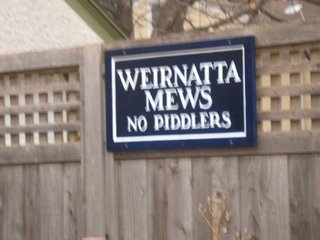
Okay, this is a book that most people read in junior high school. I first heard of it when I was in 7th grade (yes, back when dinosaurs still taught school--that long ago). One of the less stellar students gave his oral book report on it.
Did you know kids like this? This was the good looking guy who sat behind me in class, who NEVER brought a pencil or paper to class, always asked to "borrow" some from me--like I was ever going to get it back--and gave me no end of grief because I actually paid attention in class. So, I shouldn't have been surprised he liked The Outsiders so much. Actually, I think it was because he identified with it so obviously that I stayed away from it for so long.
The thing I remember the most was that he spent the entire review calling the West End kids "The Socks." "So then, Johnny got beat up by the Socks, so when the Socks came back that night..." It sounded like a bad day doing laundry.
Well now the Pony has read it for school--7th grade English--and she insisted that I read it too. So I did.
I won't bother summarizing the plot--you've all probably already read it years ago. I was struck, however, by how much it reminded me of West Side Story. So much so that I actually went back and looked up their respective histories. West Side Story came to Broadway in 1957; The Outsiders was published ten years later.
Both involve bands of boys who have organized themselves into gangs; with clearly demarked territories, with rules for fighting and a code of honor. Even when admitting to friendship with the scary Dallas, they stand up for their friends. The comparison was made explicitly to the doomed Southern gentlemen, riding off to certain death, in Gone With The Wind. Both The Outsiders and West Side Story are romances at heart--the gangs are softened, given high ideals and gentle souls: the romance of the doomed boys. I suspect the reality was less glamorous than that.
The Outsiders deals with class friction--there is none of the racial tension that fuels West Side Story--and raises the question of whether one should be proud of who you are, or whether you can escape what you are born into. The main character--Ponyboy Curtis--faces the question when he has to cut his hair to disguise himself. What did it mean that he had nothing else to be proud of except his hair and that he hung out with hoods? Was that worth being proud of?
Of course, there is the ever-present threat of the Socs--as nasty a group of madras wearing sociopaths as you'd ever meet. It might be interesting to see the story from the other point of view. I mean, assume that you are rich and handsome and you have great clothes and a great car and you rule your school. Why the hell would you go looking for some scrawny greasers to beat up? Why would you leave your side of town, your beer blasts and river parties and football practices and everything to pile into a car, go across to the poor side of town, and find some kids to beat up? As presented in the book, this happens frequently--and you really have to wonder why? What incites that kind of rage?
By midway through the book, there is a "you messed with my girl" kind of revenge battle, which at least is an attempt to explain why this would happen. It's not clear how these greasers are any kind of threat, or imposition, or even annoyance to these wealthy boys otherwise. Hinton does parse the reasons the greasers act like they do--Ponyboy asks most of them why they like to fight, as he is figuring out that he would prefer not to. There is hope that he will grow up and get out of the neighborhood--he's got good grades, he's a track star, he's actually bound for college, whether he knows it or not.
I have some quibbles: the three boys who die are almost literary cliches. Johnny was never going to grow up; he was too fragile for his environment. Like Little Eva in Uncle Tom's Cabin, he was too good for his world so he had to die. Dallas, too, was the cautionary tale character: watch out or this could happen to you--so he had to have some sort of violent end. Suicide by cop, and one can see the melodramatic end, where he stands under a streetlight and pulls an unloaded gun, then his body jerking with the force of the bullets hitting him. Just a bit over the top.
What it does do well, though, is to provide give a human voice to a character whose outer appearance doesn't match his insides. It's a way to talk about how all the characters--even the Socs--feel like outsiders. I think it would make for a fascinating study for kids who come from the metaphorical East and West sides.




